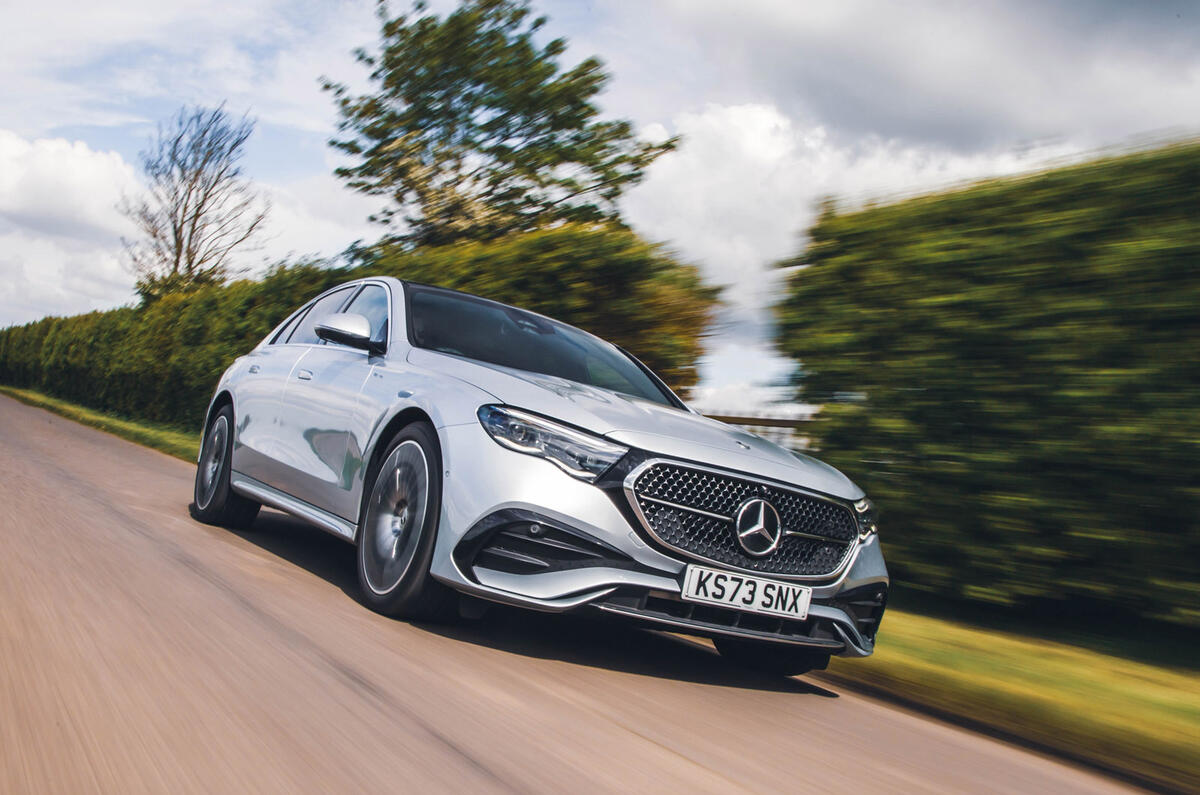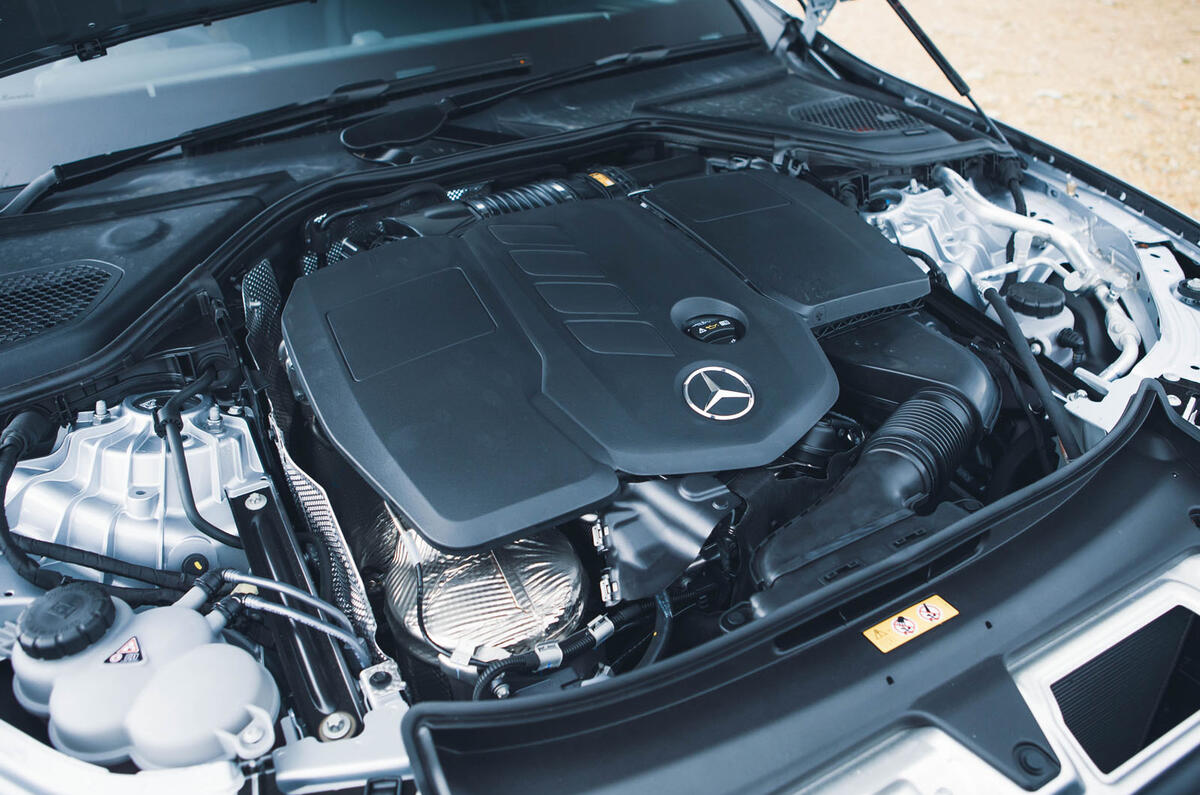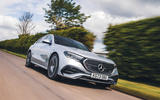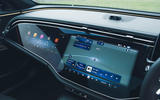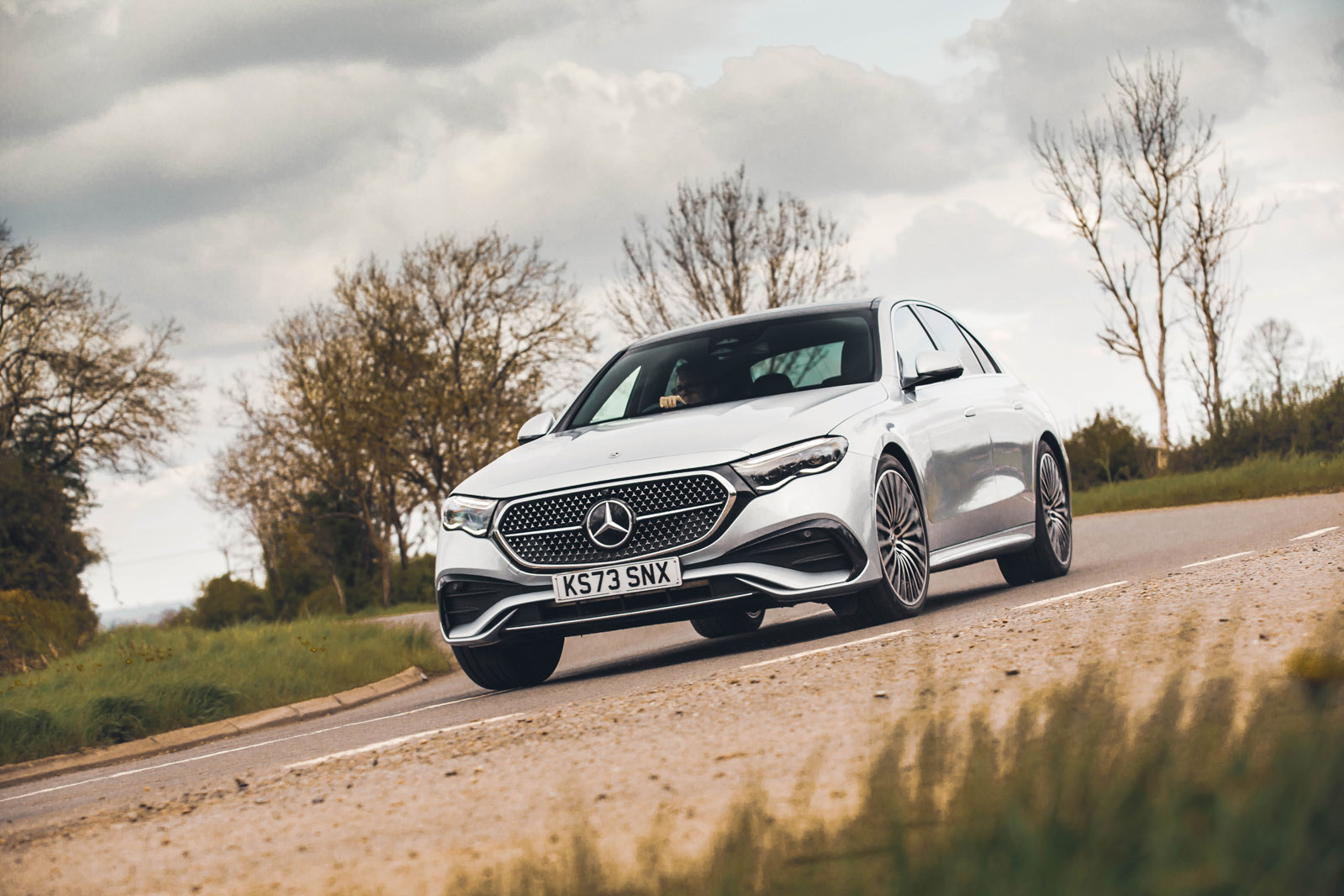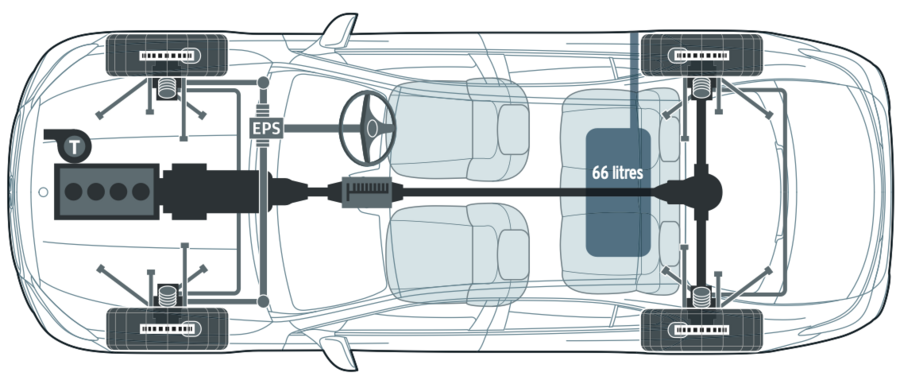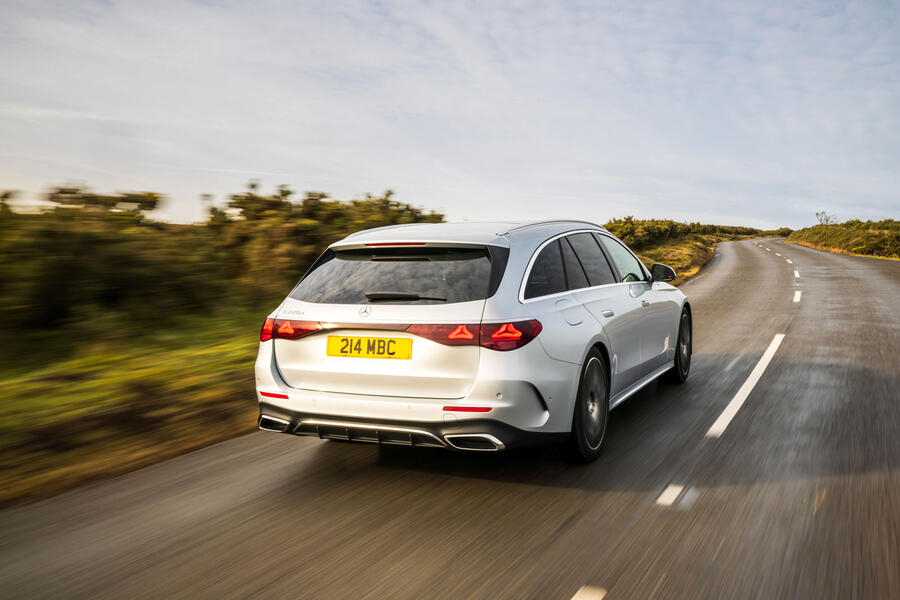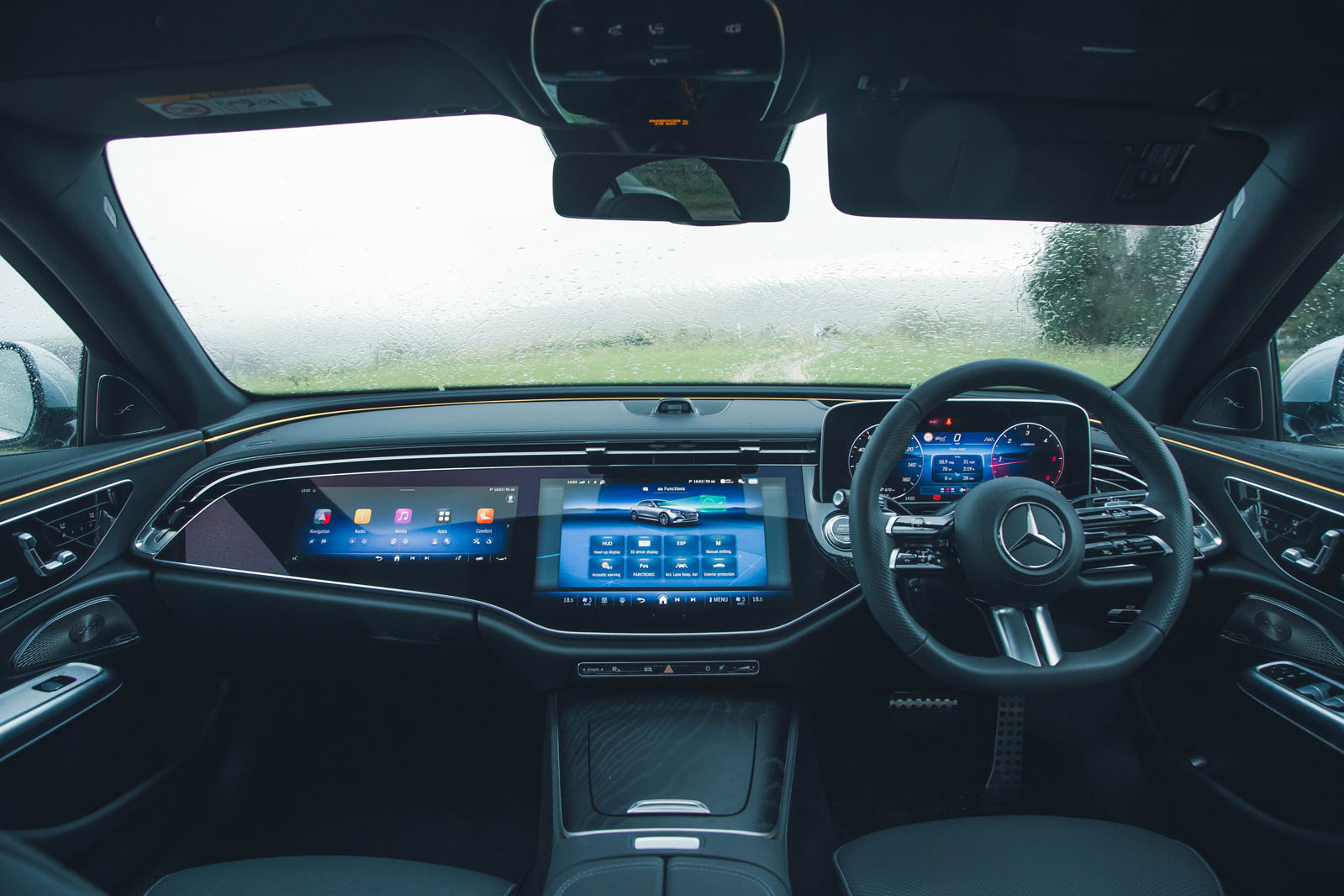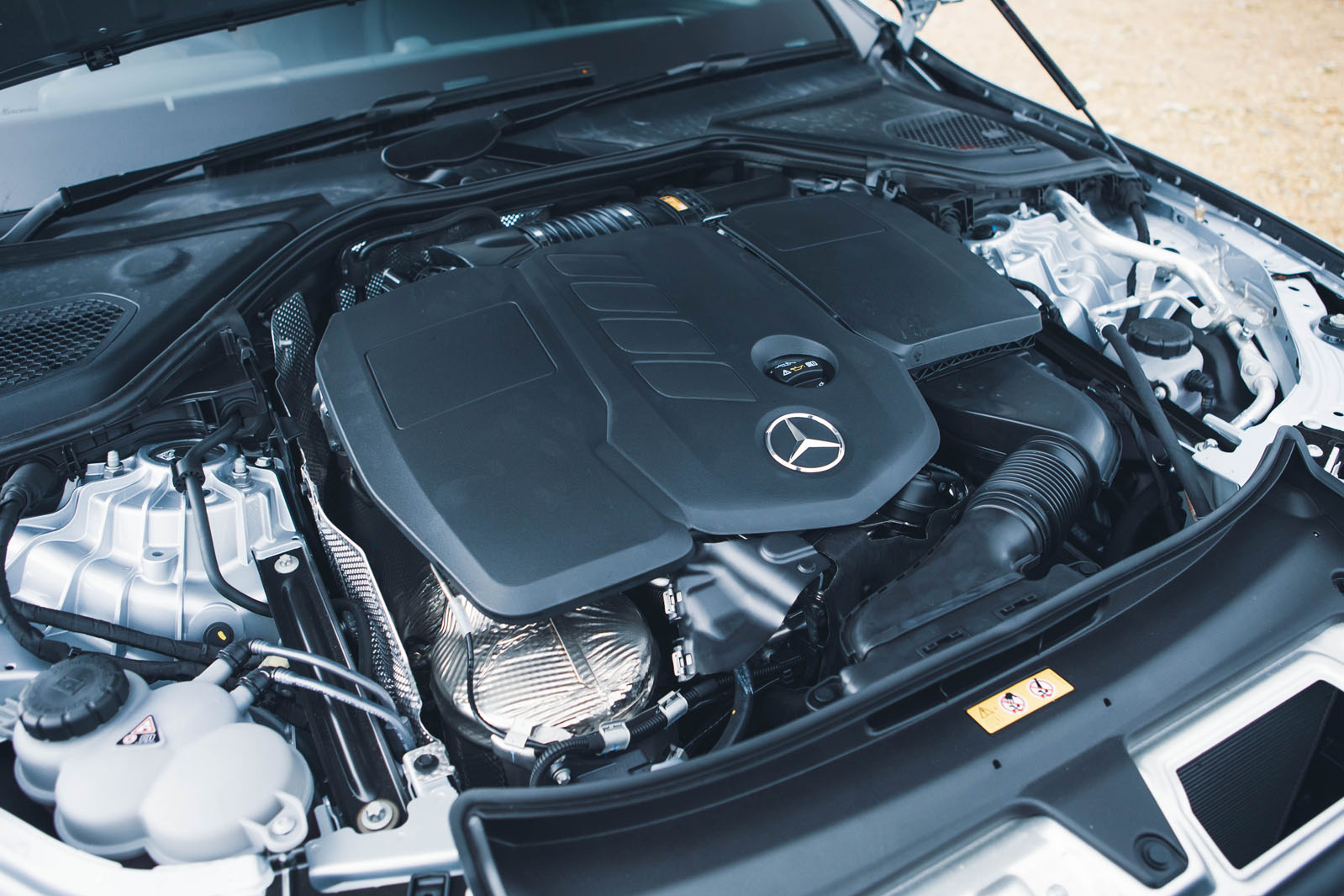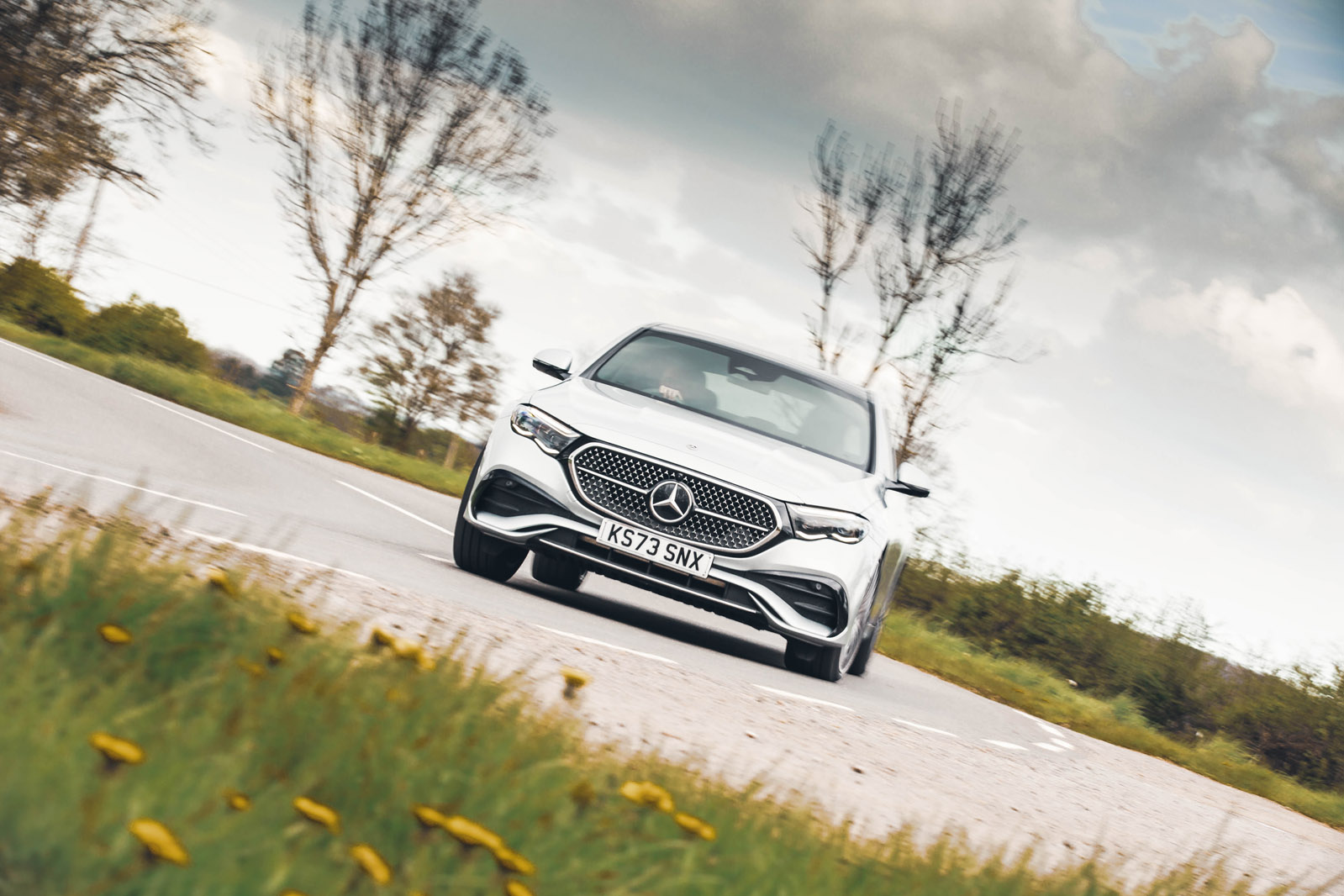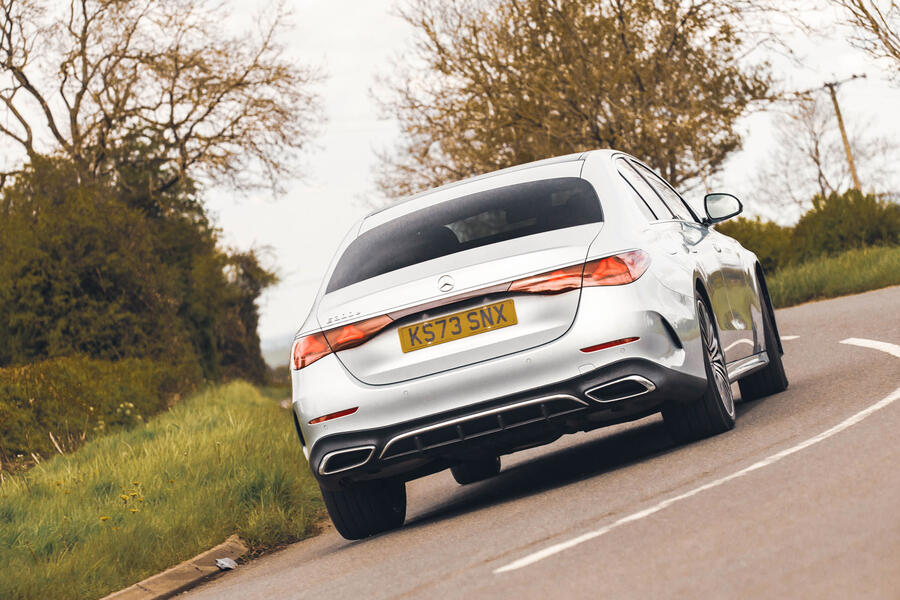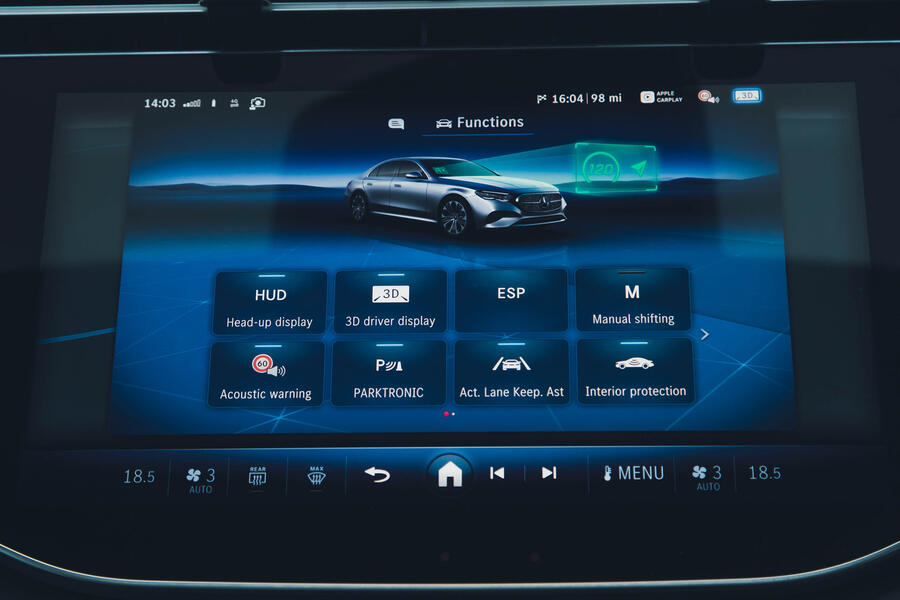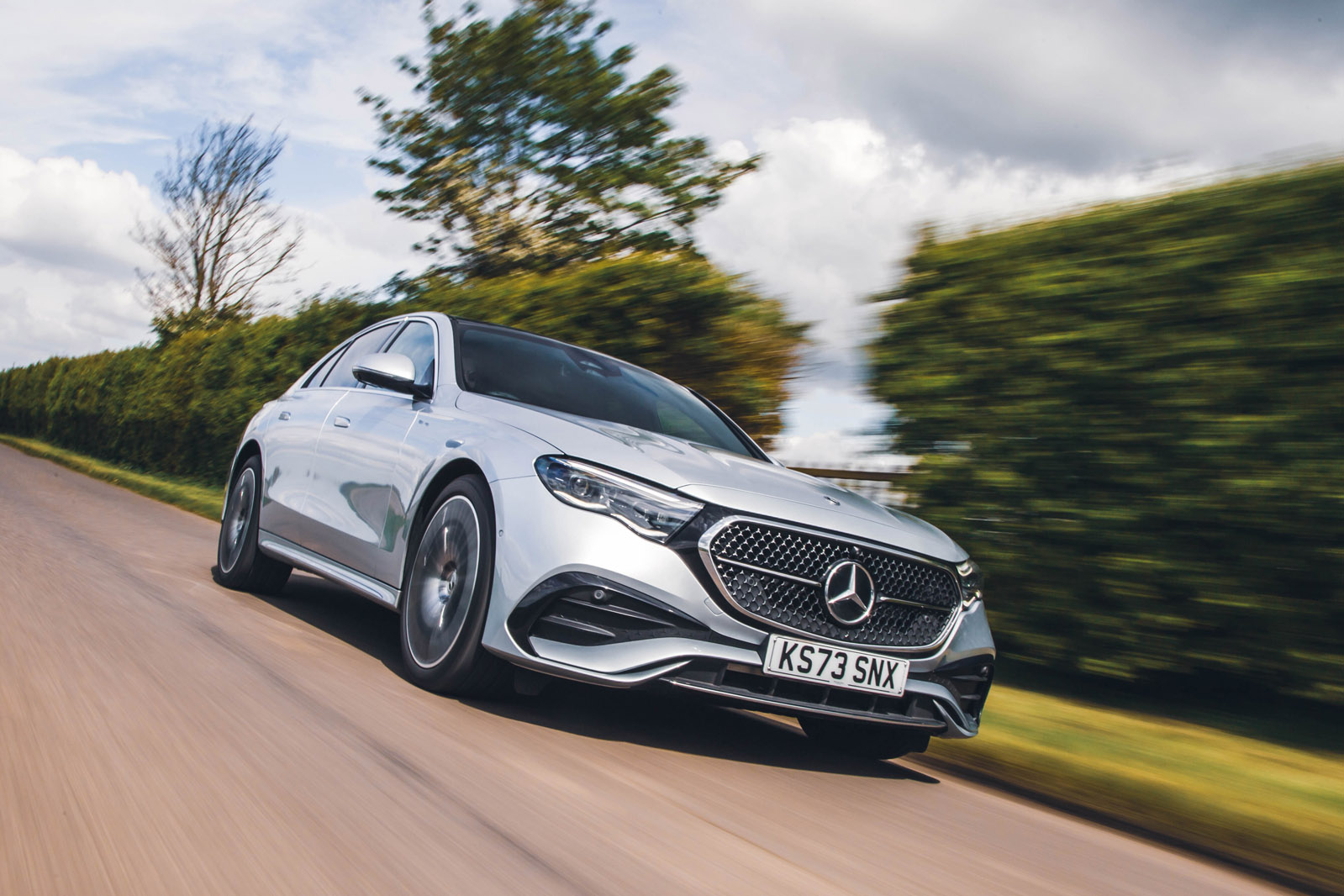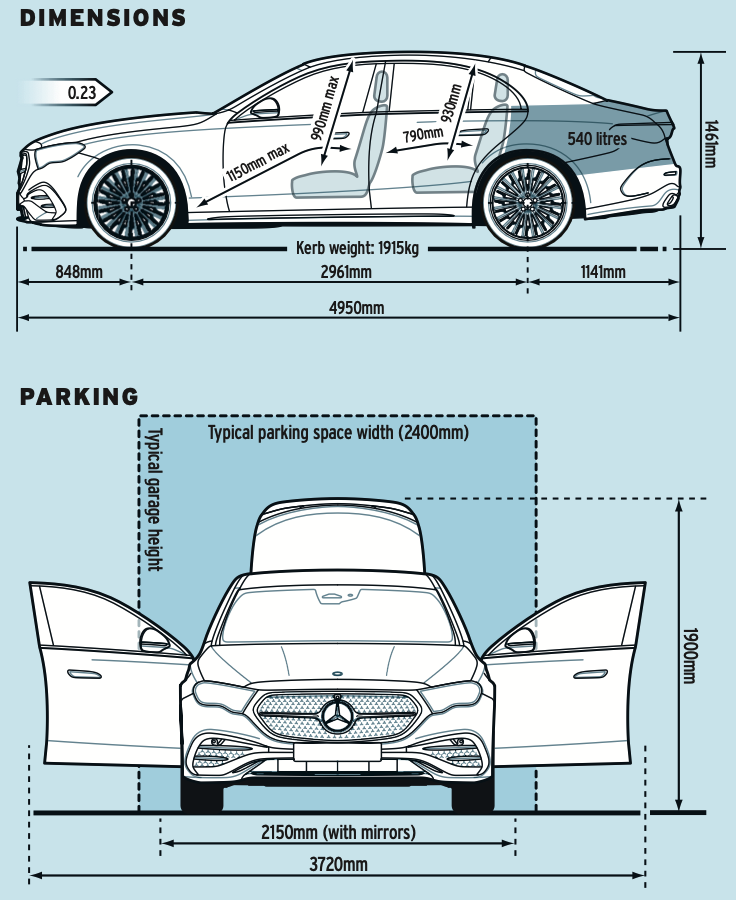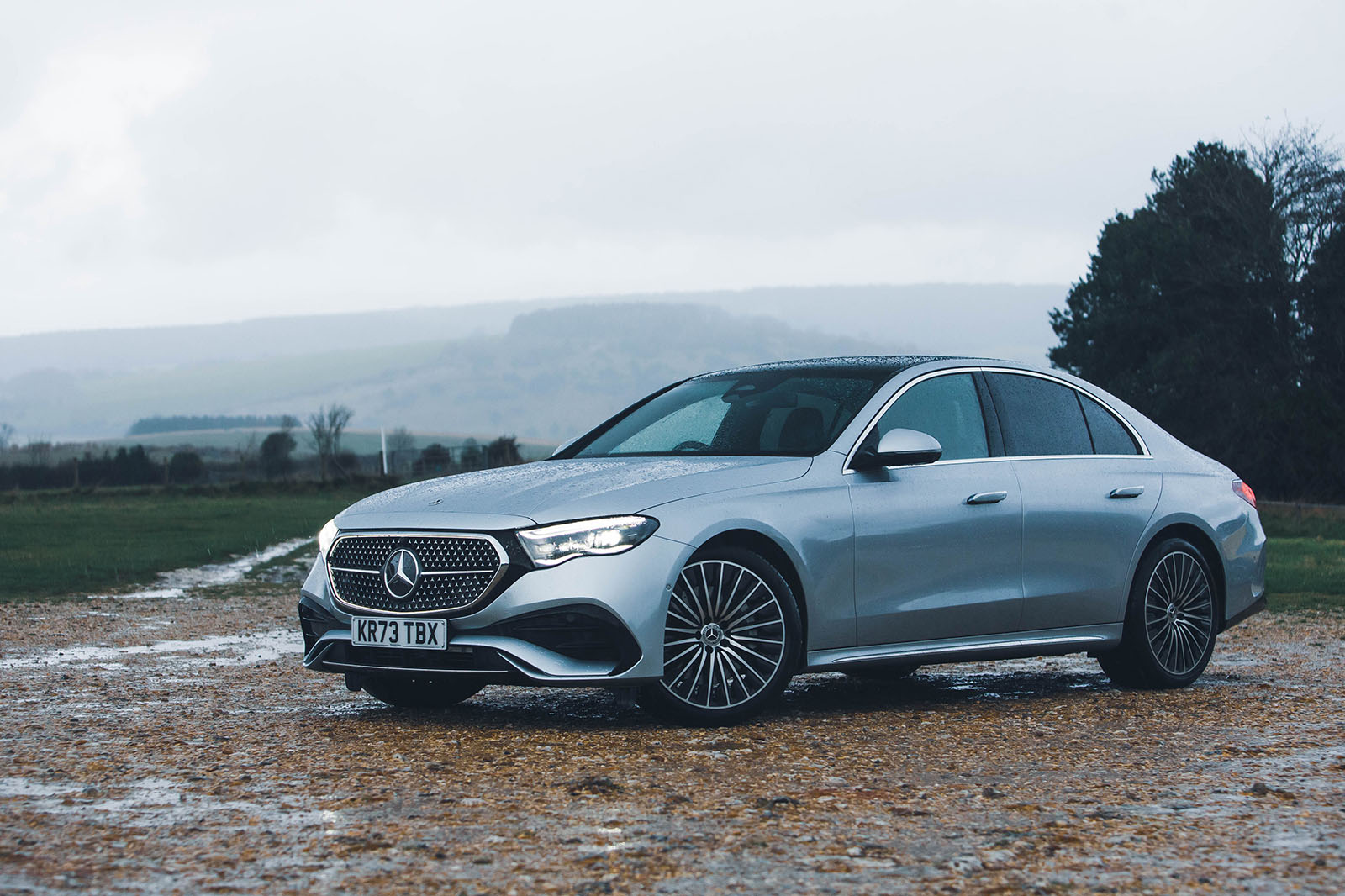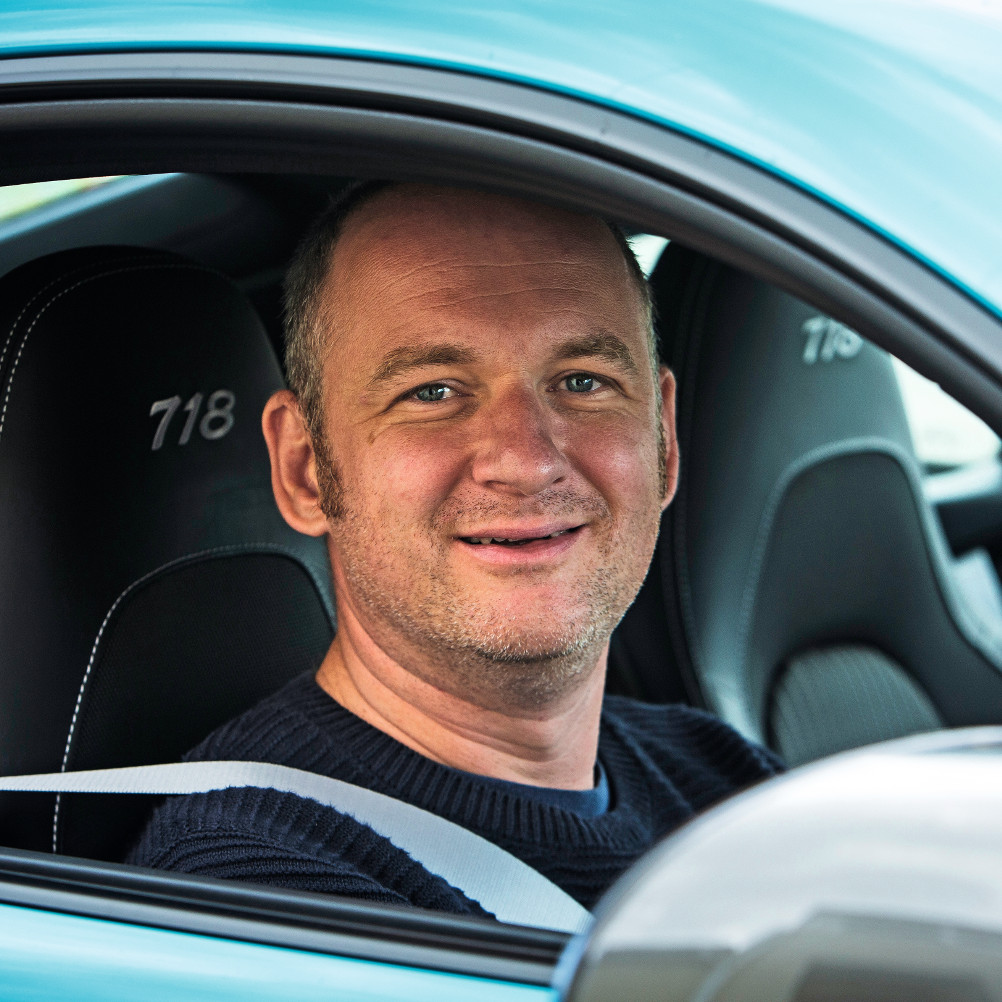Anyone hoping Mercedes' ‘bridging model’ strategy means the E-Class’s interior stays traditional will be disappointed. Still, the MBUX system is at least one of the best for usability.
Most of the interface is the same as in other recent Mercedes, so almost everything is controlled via a big touchscreen, with a row of physical shortcut buttons giving access to driving modes and vehicle settings.
The advanced voice control can activate lesser-used functions that might otherwise require a trawl through menus, or you can just say “Hey Mercedes, set mood lighting to yellow” in one go, rather than waiting for it to acknowledge you.
Where the user experience has taken a baffling backwards step is with the climate controls. In other Mercedes, the temperature and fan controls are permanently on screen, but here you must open a menu first. The layout doesn’t save space on screen (not that it needs to) and is more difficult to use.
We have criticised some recent Mercedes models for their interior quality, but this E-Class seems to halt, if not completely reverse, the trend. Most things feel solidly built and the materials are pleasing.
For an ICE-powered saloon, it is decently practical, too. Having the gear selector on the steering column leaves the tall centre console free for storage, and the carpeted door bins are pretty big.
In a world of EVs, the rear leg room in a longitudinally engined exec saloon can disappoint. Nevertheless, there is slightly more here than in the new 5 Series and head room is plentiful even for tall adults.
The boot is 20 litres bigger than that of the BMW 520i. If you choose one of the plug-in hybrid E-Class versions, you're in for a shock, though, since the battery eats up 170 litres of space. The floor remains flat but you lose a lot of height.
We would opt for the estate in any case. It gets 50mm more head room in the rear seats, and lots of room for the dog. The rear seats fold nicely flat with electronic release but tons in the boot, and the luggage cover automatically lifts up when you open the tailgate.
Plug-in hybrid versions suffer from the same problem as the saloon, but it won't be as noticeable.
The load-luggers aren't quite as cavernous as Mercedes wagons of yesteryear (in fact, they're not as commodious as Skoda's Octavia or Superb Estates), but there's 615 litres of space to play with, which stretches to 1830-litres with the rear bench lowered.
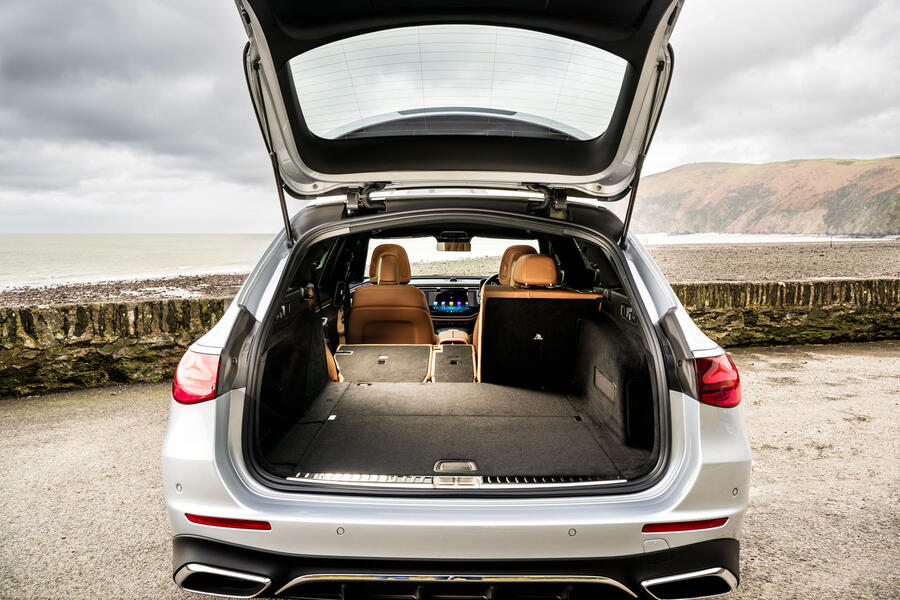
Multimedia system
Mercedes’ MBUX interface has been with us for a few years now. It has always distinguished itself with its ‘zero-layer’ concept, which puts navigation, media controls and frequently used functions on the home screen permanently so none of them requires any menu-diving to operate.
We have remarked in the ‘Interior’ section (see opposite) that the climate controls have sadly gone rogue and retreated into a menu, but apart from that, the rest works mostly as before.
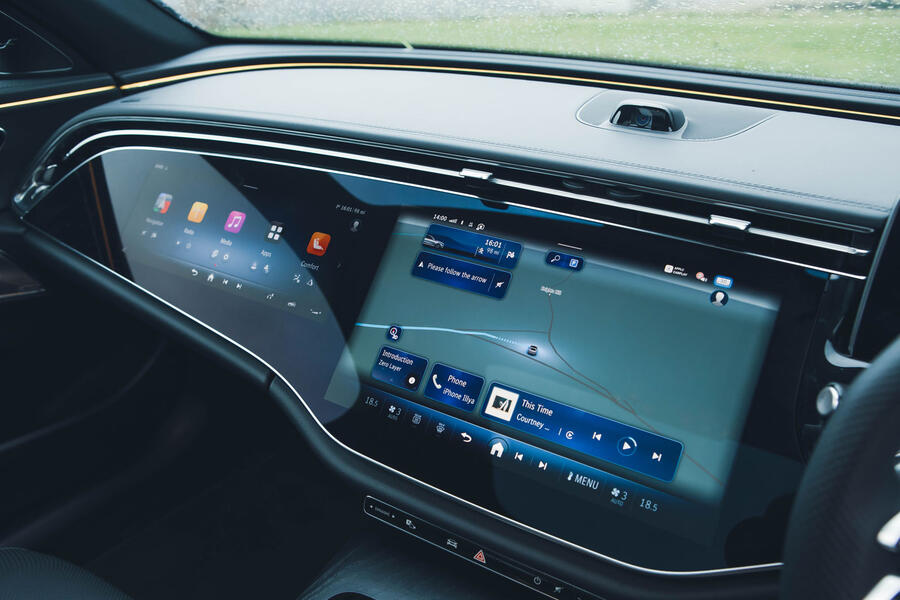
The navigation is clear and easy to program, and while the ‘augmented reality’ function isn’t especially helpful, it is at least easily turned off. Phone mirroring is integrated well and can be used wirelessly or wired.
Increasingly, functions are tied to having a Mercedes Me account. Our test car had not been properly configured so we didn’t experience the full functionality of the navigation’s traffic information or voice control. This won’t be an issue for most owners, but it still seems an unnecessary complication that these functions won’t work properly on the ‘guest’ profile.



